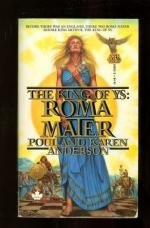|
This section contains 265 words (approx. 1 page at 300 words per page) |

|
Roma Mater and its sequels offer an unusual use of history for the foundation of their stories. In a typical fictionalization of history such as I, Claudius (1934) by Robert Graves, the author fills in historical gaps with learned conjecture, but he remains steadfastly realistic in his accounts. The Andersons freely use magic and miracles in their accounts. An interesting effect of this is unexpected— by taking the supernatural as literally the way the ancient peoples believed it to be, the Andersons show respect for them.
Their world view is not trivialized, it is instead shown to be rich, making ancient life more fulfilling for people than it might otherwise have been. Other uses of fantasy in ancient settings are typified by Mark Twain's A Connecticut Yankee in King Arthur's Court (1889) and L. Sprague de Camp's Lest Darkness Fall (1941; see separate entry). In each case the...
|
This section contains 265 words (approx. 1 page at 300 words per page) |

|




